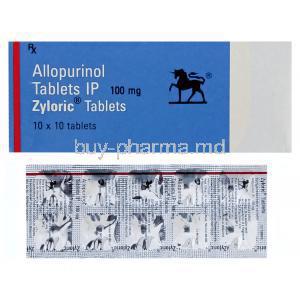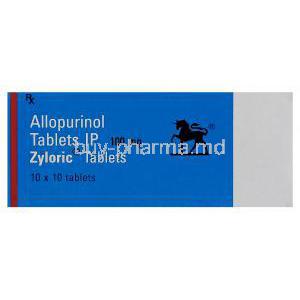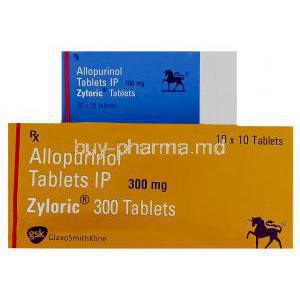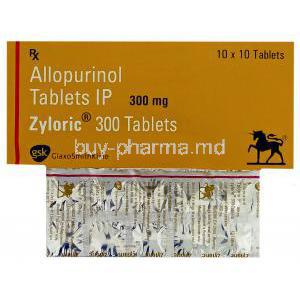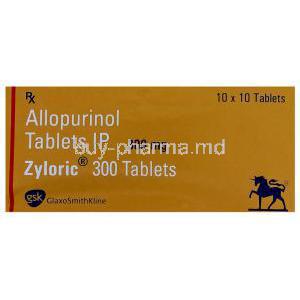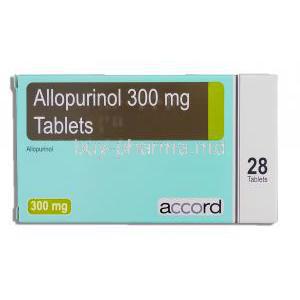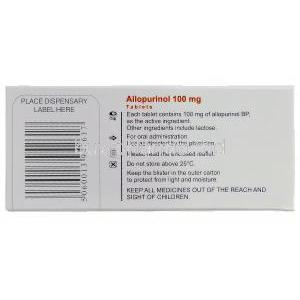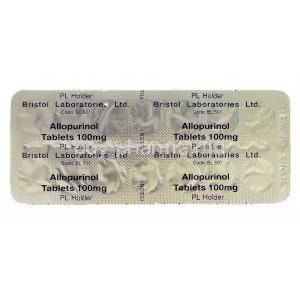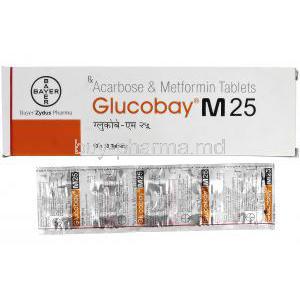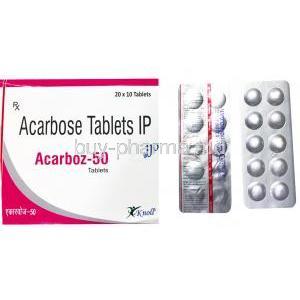Allopurinol
- What is Allopurinol?
- How Allopurinol Works
- Identify the Role of Allopurinol in Gout Management
- Approved Uses of Allopurinol
- Off-Label Uses of Allopurinol
- Monitor Progress with Allopurinol Treatment
- Manage Side Effects of Allopurinol
- Maximize Effectiveness of Allopurinol Treatment
- What is the Best Time of Day to Take Allopurinol?
- Considerations for Timing Your Allopurinol Dose
- Consulting Your Healthcare Provider
- Individualized Treatment Plans
- Maintaining Uric Acid Levels within Target Range
- Long-term Gout Management
- Regular Monitoring and Follow-up Visits
- How Allopurinol Affects Kidney Function
- Allopurinol in Patients with Chronic Kidney Disease
- Talk to Your Doctor About Allopurinol and Kidney Health
- Buy Allopurinol NowÂ

Gout: Joints Diseases Infographic
What is Allopurinol?
Allopurinol, a breakthrough in pharmacological treatment for hyperuricemia, was first developed in the 1960s. It functions as a xanthine oxidase inhibitor. It is composed of carbon, hydrogen, nitrogen, and oxygen elements, with the molecular formula C5H4N4O.
How Allopurinol Works
Allopurinol works by blocking the enzyme called xanthine oxidase, which is important for converting xanthine into Uric acid. As a result, it leads to a decrease in uric acid levels, which helps alleviate conditions aggravated by high levels of uric acid. Moreover, this medication also has effects on the kidneys by reducing the formation of uric acid crystals. Additionally, it is generally well tolerated by the liver.

Uric acid
Identify the Role of Allopurinol in Gout Management
Excessive levels of Uric acid in the bloodstream can result in the development of gout, a painful type of arthritis. This accumulation triggers the formation of needle-shaped crystals that can cause inflammation and intense pain in the joints, especially around the base of the big toe.
The Mayo Clinic offers information on symptoms and causes related to gout. Allopurinol plays a role in managing gout by aiding in the reduction of uric acid levels. In this section, we will explore how Allopurinol works, its benefits for individuals with gout, and why it's vital for effective long-term treatment.

Gout in foot
Approved Uses of Allopurinol
- Managing Gout. Chronic and acute symptoms of gout can be improved.
- High Uric Acid Levels. It is effective, in treating uric acid levels without any noticeable symptoms.
- Preventing Kidney Stones. Helps prevent the development of kidney stones caused by acid.
- Addressing Tumor Lysis Syndrome. It can be used as a treatment to prevent this serious condition.
Off-Label Uses of Allopurinol
- Cardiovascular Health. It is believed that there may be a decrease in stress on the heart muscle.
- Type 2 Diabetes. Early studies indicate that there could be an improvement in the body's response to insulin.
- Chronic Kidney Disease. There is a possibility of some benefits in slowing down the progression of the disease.
- Psoriasis. It is thought that there might be some relief from symptoms due to the inflammatory properties.
Allopurinol, as a xanthine oxidase inhibitor, plays a role in managing gout by lowering uric acid levels and preventing crystal formation within joints. This medication offers advantages, such as reducing pain and inflammation, preventing future gout attacks, and improving overall quality of life. However, it is crucial to use allopurinol for effective long-term management to avoid complications like joint damage or kidney stones.
Right Time to Begin Treatment
To ensure the outcome, it is advisable to begin Allopurinol therapy only after a comprehensive evaluation is conducted by your healthcare provider. They will carefully assess factors, including your medical history, current medications, and the severity of your gout symptoms, before recommending any treatment.
It's crucial not to take Allopurinol without consulting a doctor or attempting self-medication. Typically, doctors suggest initiating Allopurinol if you have experienced two or more attacks within a six-month period or if you have chronic kidney disease (CKD) with high levels of uric acid .
Furthermore, if untreated gout has caused damage or if you frequently experience painful episodes known as flares, commencing treatment may become necessary.
Understanding the Dosage Process
Your doctor will decide on the initial dose of Allopurinol based on factors like your age, kidney function, and the severity of your symptoms. The main objective is to find an effective dose that reduces uric acid levels while minimizing any potential side effects.
The initial dose typically prescribed for adults with kidney function ranges from 100 to 300 mg per day. Depending on how you respond to the dose, your doctor may gradually adjust the dosage.
The maintenance dose usually falls between 200 and 600 mg per day for adults with kidney function. It's crucial to follow your healthcare provider's instructions and take Allopurinol consistently as prescribed.
Failure to adhere to the recommended dosage or making adjustments without guidance can result in suboptimal outcomes and an increased risk of experiencing adverse effects.
Determining when to initiate Allopurinol therapy is an aspect of ensuring successful treatment. Regular check-ups are essential for monitoring the progress of the treatment, and any changes in symptoms or side effects should be promptly reported.
In summary, it is crucial to consult with a healthcare provider before starting Allopurinol therapy. They will evaluate factors such as your history and current medications to determine if it is suitable for you.
Doctors often suggest treatment if a person has encountered two or more instances of gout in a span of six months, has kidney disease with high levels of uric acid, has experienced joint damage from untreated gout, or frequently suffers from painful episodes referred to as flares.
The initial dosage of Allopurinol may differ depending on factors such as age, kidney function, and the severity of symptoms. It is crucial to follow your doctor's instructions for the best outcomes.
Monitor Progress with Allopurinol Treatment
It is important to keep track of how you're doing during your Allopurinol treatment in order to effectively manage gout. By keeping an eye on your acid levels and noticing any improvements, in your gout symptoms, you can ensure that the medication is having the desired effect and make any necessary changes if required.
How to Track Your Uric Acid Levels
Regularly checking your acid levels plays a crucial role in monitoring your progress while undergoing Allopurinol therapy. Your healthcare provider can order blood tests to accomplish this. According to the Mayo Clinic, it is advisable to get tested every 6 months or frequently if you have a history of frequent gout attacks or if you are beginning new medications.
- Blood Test: A simple blood test can determine the amount of acid in your bloodstream. Elevated levels may indicate control over gout and may require adjustments to your dosage.
- Joint Fluid Analysis: Occasionally, doctors might suggest examining fluid to confirm the presence of urate crystals, which contribute to the inflammation and pain associated with gout.
Signs of Improvement in Gout Symptoms
Monitoring changes in your symptoms can provide insight into the effectiveness of Allopurinol treatment. There are common indicators that suggest improvement:
- Experiencing fewer or less severe gout attacks: A decrease in the frequency and intensity of flare-ups indicates better control over uric acid levels.
- Observing faster recovery from flare-ups: If you notice a quicker resolution after a flare-up, it may be a sign that Allopurinol is effectively working for you.
- Noticing reduced swelling and pain, A decrease in inflammation and discomfort in affected joints suggests the management of gout. These signs can help gauge the effectiveness of Allopurinol treatment.
When to Consult a Doctor
If your symptoms do not improve or worsen despite Allopurinol therapy, it is advisable to seek evaluation from your healthcare provider. They can assess the situation. Make necessary adjustments to your treatment plan. There are possible reasons why Allopurinol may not be working effectively;
1. Insufficient dosage: Your doctor may need to adjust the amount of medication you are taking based on your acid levels and the severity of your symptoms.
2. Adherence; It is important to closely follow the prescribed regimen by not skipping doses or stopping the medication without consulting a healthcare professional, as this can lead to suboptimal results.
3. Other health conditions; Certain medical issues, such as kidney disease or obesity might impact how well Allopurinol manages gout.
It is essential to discuss any concerns with your doctor so they can address them accordingly. Monitoring your progress during Allopurinol treatment is crucial in ensuring that you are receiving benefits from this medication. It is important to be aware of any reactions or side effects related to taking Allopurinol in order to ensure that you are following the treatment protocol.
To effectively manage gout using Allopurinol treatment it is crucial to monitor progress by checking uric acid levels and recognizing improvements in symptoms. Blood tests should be conducted every 6 months or frequently if necessary, and it's important to consult a healthcare provider for dosage adjustments or any concerns for optimal results.
Manage Side Effects of Allopurinol
Although Allopurinol is a medication, for gout management it can have some side effects. To ensure a smoother treatment experience it is important to be aware of these side effects and know how to minimize their impact. In the following section, we will discuss the side effects of Allopurinol and offer guidance on how to effectively handle them.
Common Side Effects of Allopurinol
Some patients may experience gastrointestinal problems such as stomach pain, nausea, or diarrhea while taking Allopurinol. These issues are generally temporary. Tend to improve as the body adapts to the medication. Another possible side effect of Allopurinol is dizziness or feeling drowsy.
If you encounter these symptoms, it's crucial to exercise caution while driving or operating machinery. However, less common skin rash can occur as a serious side effect of Allopurinol. If you notice any rash while on this medication, it's important to contact your doctor, as it could be a sign of a severe allergic reaction.
Tips for Minimizing Side Effects
To minimize the chances and severity of side effects caused by Allopurinol, it is advisable to consider the following strategies;
1. Opt for more frequent meals. Instead of having three large meals, try eating smaller portions throughout the day. This can help reduce discomfort associated with taking Allopurinol by easing the strain on your digestive system. According to Healthline, there are benefits to consuming meals.
2. Stay adequately hydrated; Ensure you drink an amount of water throughout the day. This helps in flushing out uric acid and lowers the risk of developing kidney stones, which is a possible side effect of Allopurinol. The Mayo Clinic recommends an intake of at least eight glasses of water.
3. Take medication alongside food; Consuming Allopurinol with your meals or snacks might help alleviate problems by creating a protective barrier between the medication and your stomach lining.
4. Avoid alcohol: It's advisable to refrain from or alcohol consumption while taking Allopurinol as it can increase the likelihood of experiencing side effects. The National Institute on Alcohol Abuse and Alcoholism provides information regarding how alcohol impacts bodily systems.
When to Seek Medical Attention
If you encounter any persistent side effects while using Allopurinol it is essential to promptly consult your doctor. They may make adjustments to your dosage. Suggest alternative treatments if necessary. Some indications that require medical attention include trouble breathing, swelling in the face or throat, a severe skin rash, fever, chills, joint pain, blood in urine or stool, or signs of liver issues such as yellowing of the eyes or skin.
By monitoring how your body responds to Allopurinol and discussing any concerns with your doctor, you can effectively manage the side effects associated with this medication. It is crucial to understand how Allopurinol works and be aware of any risks associated with its use in order to achieve optimal results for gout or other conditions.
Allopurinol can be a treatment for gout; however, it may cause mild gastrointestinal problems, dizziness, drowsiness, and rashes. To minimize these effects, patients should consume meals more frequently and stay hydrated by drinking plenty of water while avoiding alcohol when taking the medication. If severe symptoms such as difficulty breathing or joint pain occur, it is important to contact your doctor
Maximize Effectiveness of Allopurinol Treatment
In order to optimize the effectiveness of Allopurinol treatment, it is crucial to make adjustments to your diet. These modifications can improve symptoms and contribute to overall well-being and health.
The Role of Diet in Gout Management
Maintaining a diet is essential for managing gout. There are foods that can increase the levels of uric acid in your body, which can potentially trigger gout flare-ups. By making some changes to your diet, you can reduce the risk of experiencing these episodes;
- Avoid or limit the consumption of high-purine foods like red meat organ meats (such as liver), seafood ( shellfish), and sugary drinks.
- Include more low-purine options in your diet, such as fruits, vegetables, whole grains, nuts and seeds.
- Ensure a balanced intake of protein by choosing lean poultry or plant-based sources like beans and lentils.
- Stay away from alcohol, particularly beer, as it can raise uric acid levels and trigger gout attacks.
Taking these measures will help you manage gout effectively.
Exercise and Lifestyle Tips for Gout Sufferers
In addition to following a customized diet plan for managing gout, it's important to incorporate physical activity. Exercise plays a role in maintaining a healthy weight, which helps alleviate stress on the joints affected by gout. However, before starting any exercise program, it is essential to consult with a healthcare professional.
- Engage in low-impact activities like walking or swimming that provide benefits without exerting excessive pressure on your joints.
- Include strength training exercises in your routine to build muscle and support health.
- Incorporate flexibility exercises such as yoga or stretching routines to enhance your range of motion and reduce the risk of injury.
Moreover, certain lifestyle adjustments can contribute to effective gout management.
- Avoid wearing tight shoes that could put pressure on the affected joints.
- Opt for supportive footwear instead. During a gout attack, elevate the affected limb to help reduce swelling and discomfort.
- Manage stress levels through relaxation techniques, like breathing exercises, meditation or engaging in hobbies that bring joy and tranquility into your life.
Allopurinol vs. Colchicine
Colchicine is a prescribed medication for the treatment of acute gout attacks. Unlike Allopurinol, which primarily works by decreasing the production of acid, Colchicine helps relieve pain and reduce inflammation during a flare-up by inhibiting specific inflammatory processes in the body.
Although both medications are effective in managing gout, they have roles. Allopurinol helps prevent future attacks by lowering uric acid levels. Colchicine treats attacks by reducing inflammation and alleviating pain.
The Benefits of Combining Therapies
Sometimes, doctors might suggest using both Allopurinol and Colchicine to better manage gout. This approach offers patients relief from symptoms while also aiming to prevent future issues by lowering uric acid levels.
Moreover, additional medications like anti-inflammatory drugs (NSAIDs) such as ibuprofen or naproxen could be prescribed alongside these treatments to provide extra relief during an attack.
What is the Best Time of Day to Take Allopurinol?
Determining the time to consume allopurinol is crucial for optimizing its efficacy and minimizing any potential adverse reactions. In this segment, we will explore factors that might impact your choice regarding when to administer this medication.
Considerations for Timing Your Allopurinol Dose
Establishing a daily routine is crucial when it comes to taking medication like allopurinol. It's important to find a time that fits well into your schedule and stick to it. This helps maintain levels of allopurinol in your system, which ultimately leads to better management of gout.
When it comes to mealtime, some healthcare professionals suggest taking allopurinol with or right after meals. This approach may help reduce side effects such as nausea or stomach upset. If you do experience any reactions, you can consider adjusting the timing of your dosage to minimize gastrointestinal issues like nausea or discomfort.
For information on managing side effects, refer to this Healthline article. There have been findings regarding whether nighttime or morning dosing is more effective in lowering uric acid levels. One study found that taking allopurinol at night resulted in lower uric acid levels compared to morning administration.
However, other studies have not observed differences between nighttime and daytime dosing (source). Ultimately, the choice should be based on preference and fitting it into your daily routine conveniently.
Consulting Your Healthcare Provider
To receive advice it is advisable to consult a healthcare professional regarding the best time to take allopurinol. They will consider your history, any other medications you may be using, and potential drug interactions in order to provide guidance.
There is no answer regarding the optimal time of day for taking allopurinol but it is important to maintain consistency. The key factor is to take the medication at a time that aligns with your daily routine.
If you encounter any side effects or have concerns, about when to take the medication don't hesitate to discuss them with your healthcare provider.
Individualized Treatment Plans
Every individual's encounter with gout differs, making it crucial to collaborate closely with your healthcare professional to determine the duration of use of Allopurinol. Your doctor will consider factors like age, kidney function, health status, and response to other treatments before prescribing a personalized plan tailored to your needs. Studies indicate that the majority of patients require long-term allopurinol therapy unless there are any contraindications or intolerances that arise.
Maintaining Uric Acid Levels within Target Range
The main objective of using Allopurinol is to keep acid levels in the desired range (usually below 6 mg/dL). After reaching and maintaining these levels without any effects or complications caused by the medication. Which can take several months. It might be tempting to discontinue its use completely. However stopping the medication could lead to a risk of recurring attacks since it is primarily meant to prevent future flares rather, than solely treating acute symptoms during active episodes.
Long-term Gout Management
Gout is a lasting condition that requires dedication to making lifestyle changes and adhering to medication. Allopurinol plays a role in preventing gout flare-ups by reducing uric acid levels. It's important not to stop taking the medication as this could cause symptoms to return or even worsen your condition. Make sure to follow your doctor's instructions and continue taking Allopurinol even if you start feeling better or have gout attacks.
Regular Monitoring and Follow-up Visits
To make sure you're heading in the direction of your treatment plan involving Allopurinol, it is important to regularly monitor your uric acid levels and have follow-up appointments with your healthcare provider. These check-ins will help evaluate how well the medication is working for you and make any adjustments to dosage or treatment strategies based on the progress made so far.
It may involve reducing the dosage instead of abruptly stopping it while also addressing any potential side effects that may arise during this journey toward achieving optimal health outcomes by alleviating the debilitating pain caused by inflammation related to conditions like gout itself. Discussing the duration of Allopurinol usage with your doctor is crucial since it can vary from person to person.
Additionally, understanding how Allopurinol affects kidney function can assist in determining if this medication is suitable for you. Is Allopurinol Beneficial for Kidneys? While primarily prescribed for managing gout, Allopurinol can also have an impact on kidney health. This section will explore how Allopurinol might influence kidney function and its potential benefits for individuals with kidney disease (CKD).
The Link Between Gout and Kidney Health Elevated levels of acid in the bloodstream can result in painful and inflamed joints, known as gout. Uric acid can adversely affect the kidneys, leading to issues such as kidney stones, impaired functionality, or even chronic kidney disease. Excessive amounts of acid can potentially play a role in the development of kidney stones, impaired kidney function, and even chronic kidney disease (CKD).
How Allopurinol Affects Kidney Function
Allopurinol functions by blocking the activity of an enzyme known as xanthine oxidase, which is responsible for the production of uric acid. Reducing the production of acid, allopurinol aids in preventing the formation of crystals in both joints and kidneys. In terms of kidney health, allopurinol may potentially lower the risk of developing kidney stones or experiencing recurring episodes.
Additionally, some studies suggest that allopurinol usage could help slow down the progression of kidney disease (CKD) by decreasing oxidative stress and inflammation within renal tissue. It's worth noting that allopurinol might also have an impact on blood pressure regulation, which is a crucial aspect of maintaining overall kidney health.
High blood pressure can lead to kidney damage over time Contributing to CKD development.
Allopurinol in Patients with Chronic Kidney Disease
Managing levels of acid becomes particularly important for individuals with CKD because impaired kidney function hinders the body's ability to eliminate excess uric acid. Studies have indicated that treatment with allopurinol could potentially slow down the progression of CKD, enhance outcomes, and decrease cardiovascular risk factors associated with this condition. It is crucial to note that adjusting the dosage of allopurinol is necessary for patients with reduced kidney function. Your healthcare provider will be able to modify the allopurinol dosage based on your kidney function.
Talk to Your Doctor About Allopurinol and Kidney Health
It's important to have a discussion with your doctor about whether allopurinol could be a part of your treatment plan. Your doctor will consider the medications you are taking and any existing medical conditions you have. They will evaluate the benefits of allopurinol while also taking into account any risks involved, as well as considering how it may interact with other medications or underlying medical conditions.
Allopurinol is primarily used for treating gout but it can also have effects on kidney health. It may help prevent the development of kidney disease and reduce cardiovascular risks associated with it by decreasing uric acid production and preventing crystal formation in the kidneys. However, individuals with impaired kidney function should adjust their allopurinol dosage under the guidance of a healthcare professional.
Buy Allopurinol Now
Allopurinol is a used medication for treating gout by reducing elevated levels of uric acid in the bloodstream. It is essential to determine the appropriate timing to initiate allopurinol therapy, monitor progress manage any potential side effects, and optimize treatment outcomes. Comparing allopurinol with available medications for gout can assist individuals in making well-informed decisions about their treatment options.
When purchasing allopurinol, it is crucial to ensure safety and reliability by choosing a source like Buy Pharma. md. Patients should also consider factors such as the timing for taking allopurinol and the recommended duration of treatment. Furthermore, certain studies have suggested the benefits of allopurinol for kidney function in specific cases. If you are experiencing gout or elevated acid levels and are considering purchasing Allopurinol, we encourage you to visit Buy Pharma. md today to access safe reliable medication at an affordable price point.
Allopurinol FAQ
- What are Allopurinol side effects?
- What is Allopurinol used for?
- What are the uses of Allopurinol?
- What does Allopurinol 100mg refer to?
- What is Allopurinol for gout?
- How does Allopurinol work for gout?
- What is the usual Allopurinol dosage?
- How is the dose of Allopurinol determined?
- What does Allopurinol 300 mg refer to?
- What are Allopurinol interactions?
- What are Allopurinol side effects?
- What is Allopurinol used for?
- What are the uses of Allopurinol?
- What does Allopurinol 100mg refer to?
- What is Allopurinol for gout?
- How does Allopurinol work for gout?
- What is the usual Allopurinol dosage?
- How is the dose of Allopurinol determined?
- What does Allopurinol 300 mg refer to?
- What are Allopurinol interactions?
- Allopurinol and alcohol
- Allopurinol generic name
- Allopurinol side effects long-term use
- Allopurinol gout dosage
- Allopurinol and colchicine
- Allopurinol versus febuxostat, Allopurinol vs febuxostat
- Allopurinol contraindications
- Allopurinol dosage during gout attack
- Allopurinol gout medication
- Allopurinol pill
- Allopurinol versus colchicine, Allopurinol vs colchicine
- Allopurinol warnings
- Allopurinol rash
- Allopurinol pronunciation
- Allopurinol 100mg side effects
- Allopurinol medication
- Allopurinol vs Uloric
- Allopurinol indications
- Allopurinol adverse effects
- Alternative to Allopurinol, Allopurinol alternative
- Allopurinol over the counter
- Allopurinol cost
- Allopurinol for kidney stones
- Allopurinol other names
- Allopurinol kidney stones
- Allopurinol nursing considerations
- Allopurinol class
- Allopurinol gout medicine
- Allopurinol tablet
- Allopurinol generic
- Allopurinol renal dosing
- Allopurinol with colchicine


